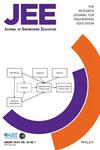Visual representations are pervasive in electrical engineering instruction in various instructional settings. Further, electrical engineering instruction often requires students to extend simple visual representations to learn about more complex visualization in subsequent instruction. Yet, students often struggle to understand visualizations. An open question is whether supporting students' understanding of visual representations enhances their subsequent learning. We investigate this question in both individual and collaborative learning settings.
We investigated the impact of support for students' understanding of simple visual representations on students' learning of subsequently presented complex visual representations. Further, we investigated whether students' level of mental rotation skills moderates the impact of such instructional support.
Two experiments tested the impact of instructional support for visual representations in an individual or a collaborative learning setting. Students were randomly assigned to receive different versions of instructional support, or none.
Study 1 was conducted in an individual learning setting. While students with high mental rotation skills benefited from the instructional support, students with low mental rotation skills did not benefit. Study 2 was conducted in a collaborative learning setting. Here, all students benefited equally from the support.
Our findings suggest that instructional support for simple visual representations can enhance students' subsequent learning with complex visual representations. Further, our findings suggest that a collaborative learning setting may be particularly beneficial to students with low mental rotation skills. This study contributes to an understanding of instructional environments that can improve learning with visual representations in engineering education.



